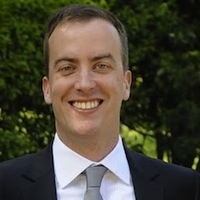October 19 Commission Session #4: CCTV v. C-SPAN
On we march to AE22, the defense’s motion to grant public access to commission-designated broadcast sites. That topic belongs to James Harrington, a member of Ramzi Binalshibh’s team. Most people cannot attend these proceedings, the lawyer argues, given the court’s location in Guantanamo. He approves of the existing CCTV process, such as it is.
Published by The Lawfare Institute
in Cooperation With

On we march to AE22, the defense’s motion to grant public access to commission-designated broadcast sites. That topic belongs to James Harrington, a member of Ramzi Binalshibh’s team. Most people cannot attend these proceedings, the lawyer argues, given the court’s location in Guantanamo. He approves of the existing CCTV process, such as it is. But there's still this problem: some of the CCTV facilities are not generally open to the public. Any time that the commission permits CCTV broadcasting, in Harrington’s view, the viewing location must be publicly accessible.
Judge Pohl asks: does “available to the public” mean that no restrictions can be imposed at any sites? The public has complete access to some sites, just not all of them. Victims’ families have a separate viewing area at one site, he notes. He seems skeptical. Harrington says a separate area for such people is fine, but the trouble is this: there’s only one “general public” site, at Fort Meade. Others are not open to all, and they must be. Judge Pohl confirms: so once a decision is made to make a site public, it must be generally so. There’s no requirement as to the number of sites, or their locations. But the key is open access, Judge Pohl asks? That’s right, confirms the lawyer, who returns to counsel table.
Major William Hennessy joins Harrington’s claims, and then builds upon them. The government’s boasts of transparency are incompatible with its just-enough-to-say-it's-public approach to CCTV broadcasting, he says. The defense lawyer argues for more transparency, in the form of open transmissions. Judge Pohl says the decision to broaden the commission broadcasts---say, to C-SPAN---would belong to the Secretary of Defense, not to him. Fairness is a crucial issue, emphasizes Hennessy, in an unprecedented case like this. The high stakes demand more than the prosecution’s approach to date, he argues. Judge Pohl still has no idea how he possibly could order a public broadcasting system. Hennessy appeals to Judge Pohl’s inherent authority to ensure a fair trial; but the invocation of such authority, to the court’s eye, seems like an invitation to make a moral or policy decision. Is counsel suggesting that “every accused in federal court doesn’t get a fair trial,” if their cases are not shown on television? Or what about the accused's families? Did they observe the trials remotely in Ghailani and Moussaoui? The defense lawyer answers by once more critiquing the executive branch’s CCTV procedure, and sits.
Lieutenant Kiersten Korczynski, a prosecutor, takes issue with Hennessy’s remarks. Moussaoui, among other authorities, is squarely on point and demonstrates that there’s no right to broadcasting, let alone open broadcasting: in that case, a video and audio feed was created, and allowed press and overflow gallery members to follow along from an adjacent room. And Rule 806, regarding the broadcast of commission proceedings, authorizes only CCTV broadcasting---which exists already. At the same time, internet and other media cover the CCTV broadcasts, and ensure that the public remains well aware of what goes on during commission sessions. That arrangement is consistent with Supreme Court cases, as well as federal and courts martial practice.
Regarding Harrington’s arguments, Korczynski says that the sole requirement is that the public and the media have an opportunity to attend and report what they observe. Does one need an ID-card to be admitted to the Fort Meade site, asks Judge Pohl? Yes, the lawyer answers. The court asks about AE33, a government motion which dovetails with AE22: are these overlapping? The prosecutor says they are. Harrington adds a few more words, and other defense lawyers join in his motion---which Judge Pohl takes under advisement.
Wells C. Bennett was Managing Editor of Lawfare and a Fellow in National Security Law at the Brookings Institution. Before coming to Brookings, he was an Associate at Arnold & Porter LLP.



.jpg?sfvrsn=d5e57b75_7)

